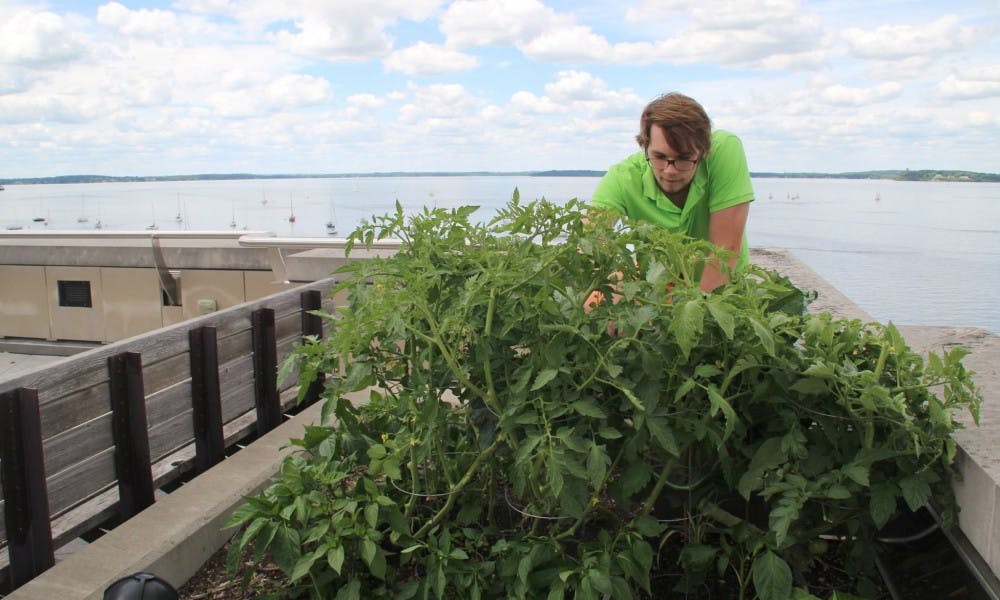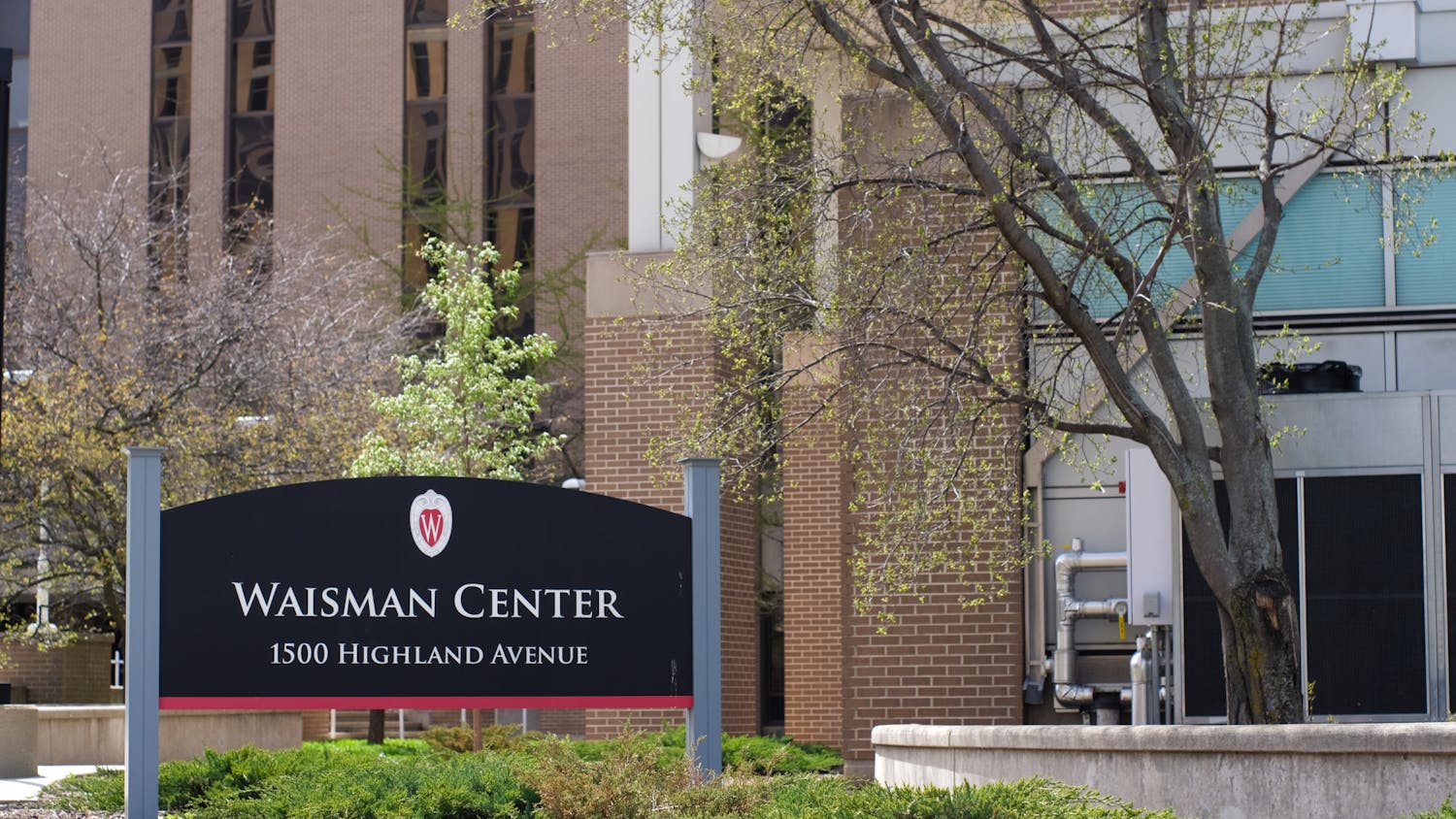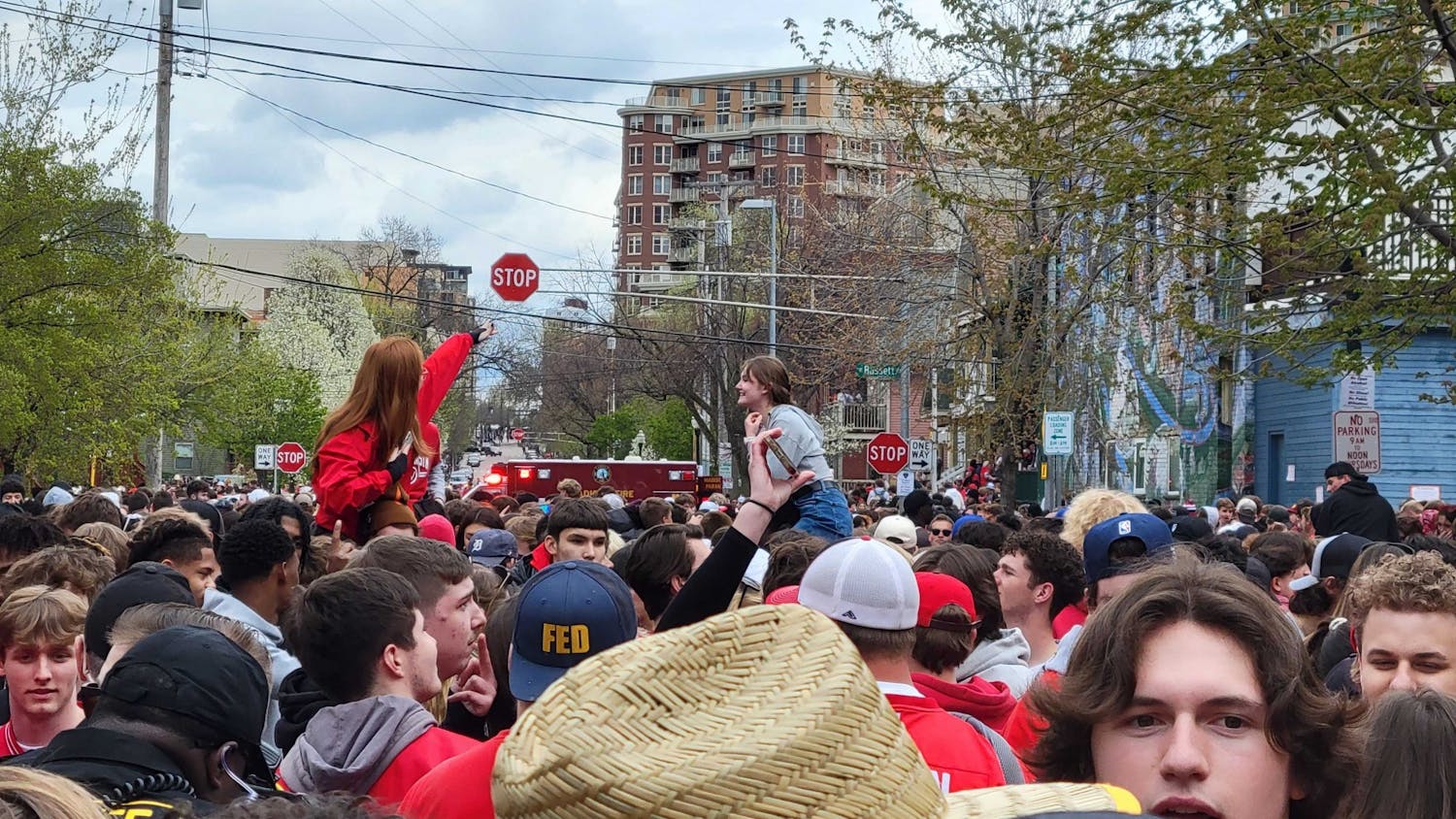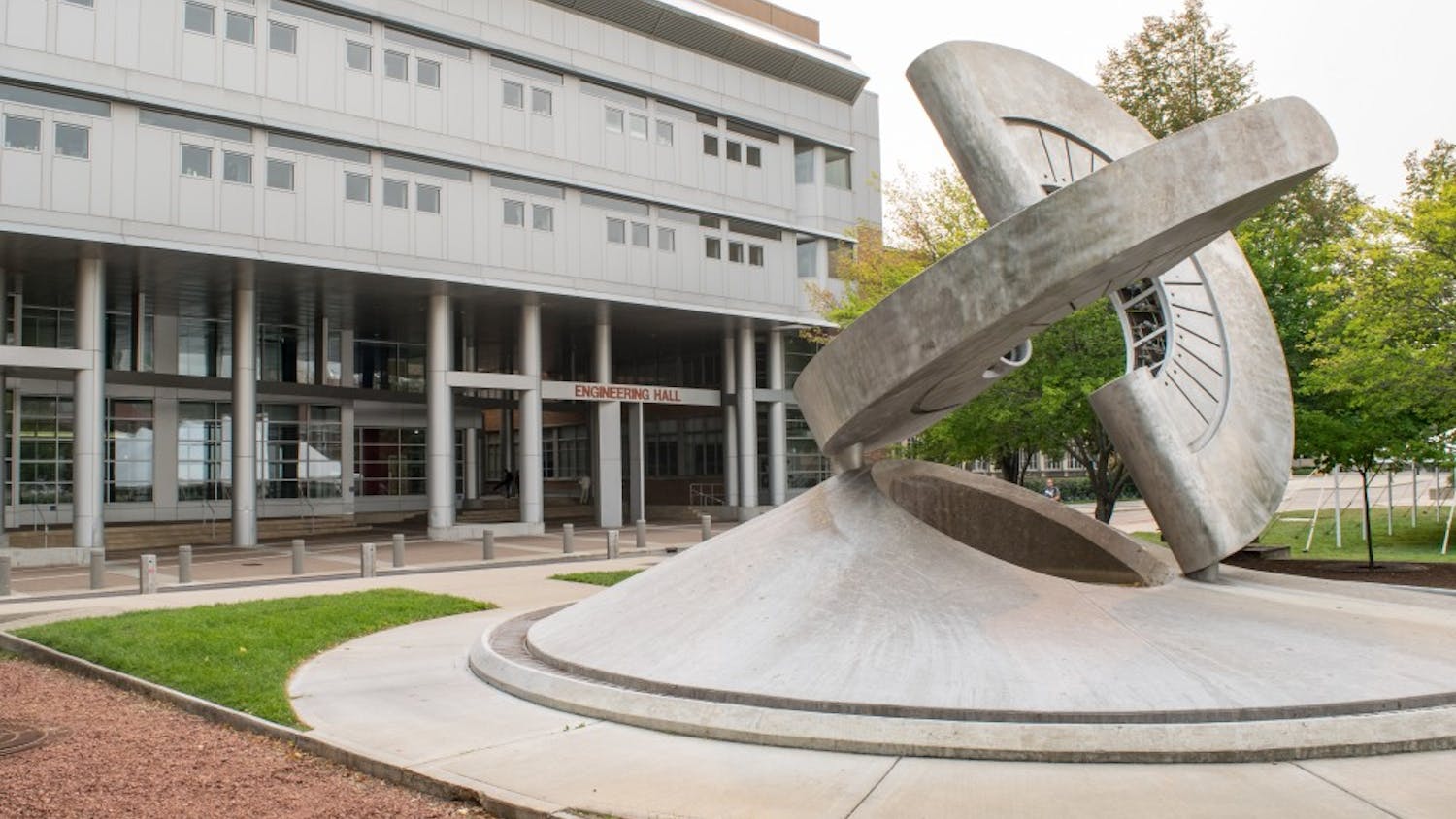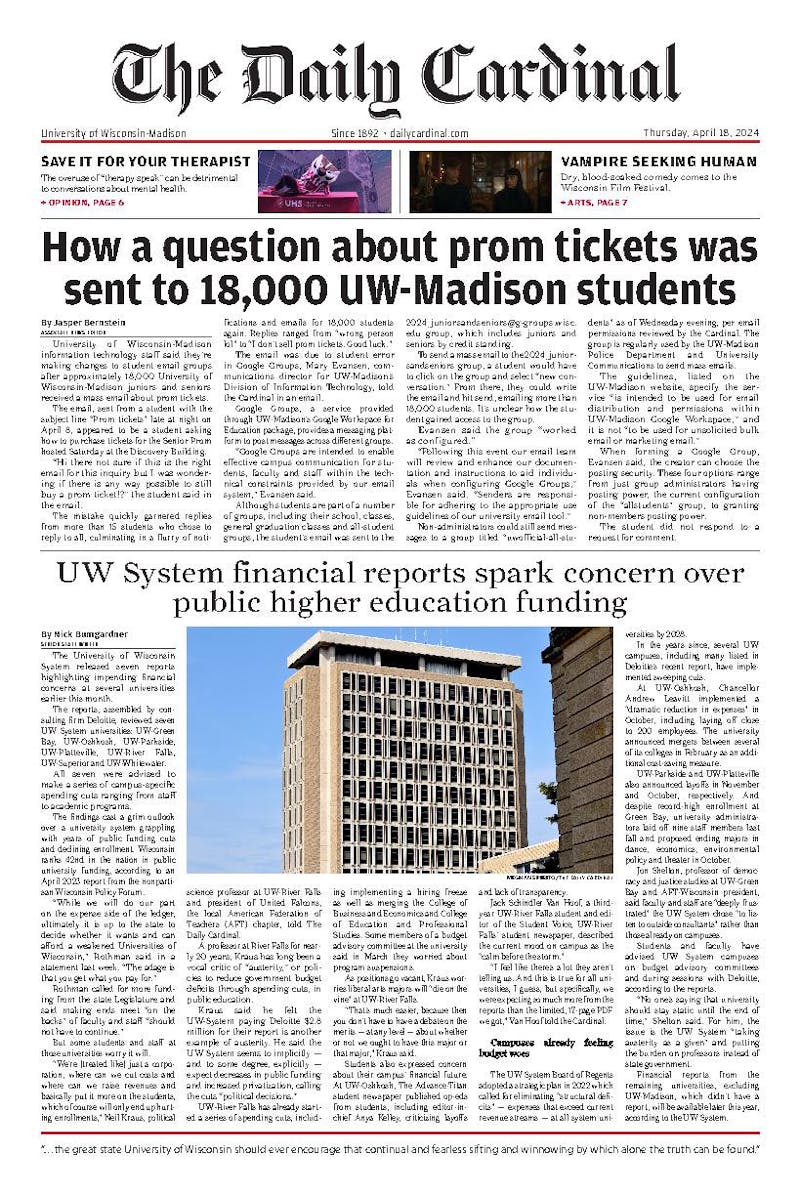Urban agriculture is a very specific term defining a very broad field: agriculture, from gardening to raising livestock, in a city or suburb surrounding an urban space. It is a practice that has spread over time — but it all started in Madison.
In the late 1900s, the city’s planning department was reoriented toward food production, according to Lindsey Day Farnsworth, a postdoctoral researcher of urban agriculture at UW-Madison’s Center for Integrated Agricultural Systems. This shifted how people thought about the role of community gardens and urban farming.
Experts note the distinction between urban farming — which is typically associated with metropolitan food production that is intended to generate a profit — from community or school gardens, which are urban agriculture in the sense that food is being grown in the city. However, the purpose of the latter is not to make money.
Both of these practices are increasing in Madison. Today, more people than ever are growing food in cities, according to the Smithsonian. Cities are where most people live now and Madison is not excluded from this.
UW-Madison recognized the growing participation in urban agriculture, and, as a result, created curriculum explicitly for the field. The course is being developed by various professors but is spearheaded by The Center for Integrated Agricultural Systems, a program on campus dedicated to cohesive agriculture.
The CIAS research center within the university’s College of Agricultural and Life Sciences was built in 1989 to create sustainable agricultural research programs that respond to farmer and citizen needs, according to the center’s website. It added that, consequently, human relationships are at the core of the facility.
F.H. King Students for Sustainable Agriculture is a student organization within CIAS that owns a student farm in Eagle Heights and a rooftop garden at the Pyle Center. Rena Yehuda Newman, the outreach director for the organization, said students should care about urban agriculture and agriculture as a whole because UW-Madison is a land-grant institution, meaning the university received permission from the state to establish the school on federally controlled land.
“One of the founding principles of UW is to create new agricultural knowledge and help distribute that out to the rest of the state, which is really a fantastic and forward thinking philosophy about agriculture,” Yehuda Newman said. “It’s part of what it means to be a Badger.”
CIAS’s goal is to learn how particular integrated farming systems can contribute to environmental, economic, social and intergenerational sustainability. Today, that means urban agriculture, according to Yehuda Newman.
“Urban agriculture is one way of addressing equity and distribution problems,” said Newman. “If it’s too difficult to access fresh produce that’s being imported into the city, allowing people the sovereignty to grow their own food in their own environment is a really strong way to allow that autonomy and agency.”
Steve Ventura, the chair of the Agroecology Program at UW-Madison and an environmental studies professor, leads curriculum development, along with several other professors from the College of Agricultural and Life Sciences, CIAS and various community partners. They received a grant from the USDA Higher Education Challenge Grant Program to create a school for urban agriculture. The school will have three different modes of delivery: a farm and industry short course, a food systems certificate for undergraduates and hands-on experience with Community Groundworks and The Center for Resilient Cities.
Ventura hopes the school for urban agriculture will be a self-sustaining program before the grant runs out in three years. Though the curriculum is not definite yet, students have expressed interest in the program, he said.
Michelle Miller, associate director of programs for CIAS, said it is immensely important to consider how cities interact with the suburban areas surrounding them when examining urban agriculture. It is important to recognize risks shared between the people who eat the food and the people who grow the food, Miller said, because disparities can arise, like agricultural workers who aren’t paid and don’t have healthcare.
“[This] is a kind of urban agriculture — it doesn’t necessarily mean you are growing something in an urban space but you are conscious of the fact that you are embedded in a rural area and that you have a responsibility to the farmers near your city,” Miller said.
Farnsworth also acknowledged the necessity for urban agriculture curriculum in Madison specifically.
“Madison is distinct from a lot of places that we’ve seen an emphasis on urban agriculture in the last decade or two,” she said. “There’s a long-standing history of interest in community food projects and food production in general, which is unique.”
Madison is relatively small — most directions you go, you hit farmland quickly, Farnsworth said. As a result, Madison has had a robust farmer’s market for over three decades, creating a positive food culture within the city.
A lot of cities that aren’t supportive of urban agriculture believe the best use of land is economic development, Farnsworth said. Because urban farming isn’t extremely lucrative, other city governments need alternative benefits — cost savings at the household level due to backyard gardens and farm-to-school projects encouraging kids to try new foods — to justify using urba
Another reason Madison is distinct from other cities is the strong relationship between homegrown foods and citizens that is forged from Madison’s history of farming, according to Olivia Parry, the senior planner at the Dane County Planning & Development Department.
Today, people are more interested in health and what goes into their food than ever before, said Parry, who studied local foods in graduate school.
“Kids [understand] that buying local is helpful to their family’s livelihood and their communities,” Parry said. “There’s this kind of this food patriotism, I think, with buying local.”
Farnsworth spoke along similar lines, saying, “Once that connection [to food] is established, we start make those connections between food and place and nutrition and what we’re putting into our bodies in a lot of other contexts. That starts to become quite transformative, both at the personal level and in terms of the food system.”
The planning department’s proactive measures in the ’90s are echoed today. The Madison Food Policy Council recently developed a working group devoted to urban agriculture. Farnsworth thinks this is part of the reason urban farming in particular has increased in profile recently.
Members of the councils are working with a group of UW-Madison interns to develop a food waste and recovery guide for organizations, businesses and individuals who may have surplus edible products and are looking for an outlet so that it does not go to waste, according to George Reistad, the food policy coordinator for the Mayor’s Office.
Reistad said f
“I think there are always disparities between people and need and resources to alleviate that need, food being no exception,” Reistad wrote. “I’ll say this – there are a lot of passionate people who are very giving of their time and money to provide additional services and resources in relation to food and other social determinants of health.”

